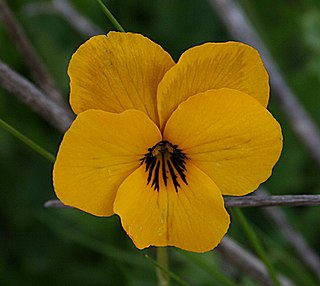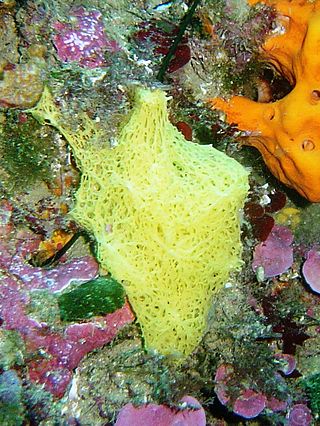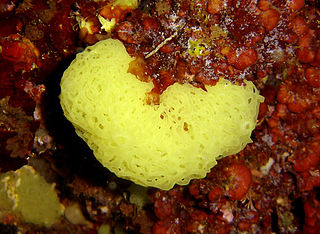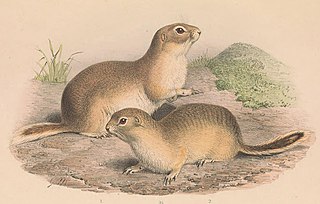
Viola pedunculata, the California golden violet, Johnny jump up, or yellow pansy, is a perennial yellow wildflower of the coast and coastal ranges in California and northwestern Baja California. The common name "Johnny jump up" is usually associated with Viola tricolor however, the introduced garden annual.

Clathrinidae is a family of calcareous sponges in the order Clathrinida. It contains the following genera:

Clathrina is a genus of calcareous sponge in the family Clathrinidae. Several species formerly in Clathrina were transferred to the newly erected genera Arturia, Ernstia, Borojevia, and Brattegardia in 2013. The name is derived from the Latin word "clathratus" meaning "latticed".
Ulmus laevis var. celtideaRogow. [: like Celtis, the leaves] is a putative variety of European White Elm first described by Rogowicz, who found the tree in 1856 along the river Dnjepr near Chernihiv in what is now northern Ukraine. The type specimen is held at the National Herbarium of Ukraine. The variety was first named as Ulmus pedunculata var. celtidea. Litvinov (1908) considered it a species, calling it Ulmus celtideaLitv., a view not upheld by other authorities.

The Alashan ground squirrel is a species of squirrel. It is native to China and Mongolia.
Clathrina blanca is a species of Calcareous sponge in the genus Clathrina.
Clathrina chrysea is a species of calcareous sponge from New Caledonia. The species epithet refers to the light yellow colour of the sponge.

Clathrina clathrus is a species of calcareous sponge belonging to the family Clathrinidae.
Ascandra contorta is a species of calcareous sponge belonging to the family Clathrinidae.

Clathrina coriacea is a species of calcareous sponge belonging to the class Calcarea and family Clathrinidae. Species in the genus Clathrina are composed of calcium carbonate tube-like skeletons containing spicules. The sponge can be located in shallow waters widely distributed along North Atlantic coasts, as well as on other coasts.
Clathrina heronensis is a species of calcareous sponge fin the family Clathrinidae and found in the seas around Australia, and in the coastal seas of many islands to her north. It was first described by Gert Wörheide and John Hooper in 1999.
Clathrina laminoclathrata is a species of calcareous sponge from Australia. The species name is in reference to its unusual lamina.
Clathrina primordialis is a species of calcareous sponge from Croatia.

Scalesia pedunculata is a flowering plant species in the family Asteraceae, growing to a slender tree, and found in dense stands on the humid windward coasts of the islands of Santa Cruz, San Cristobal, Santiago and Floreana in the Galapagos Islands. The Galapagos archipelago lies in the southeast trade wind zone, so that climate and weather are dominated by the moisture-bearing trade winds and the topography of the islands. In general, the windward sides of the islands have a much higher precipitation than the leeward sides. Scalesia pedunculata is regarded as vulnerable because of human encroachment, invasive introduced plant species such as Cedrela odorata and Psidium guajava, and grazing by introduced goats. Fires and cutting for fuel are also contributory problems, though the tree's wood is soft, with a large, pithy centre.
Clathrina arnesenae is a species of calcareous sponge from the Atlantic Ocean. It is named after Norwegian spongiologist Emily Arnesen (1867–1928).
Clathrina macleayi is a species of calcareous sponge from Australia.
Clathrina philippina is a species of calcareous sponges from the Philippines.

Hakea pedunculata is a shrub or small tree in the family Proteaceae. This species is found in the Far North region of Queensland and adjacent islands. It has flat, broadly egg-shaped leaves and white, cream or greenish flowers.

Carex pedunculata, the long-stalk sedge or longstalk sedge, is a species of flowering plant in the genus Carex, native to Canada and the central and eastern United States. Its seeds are dispersed by ants.







